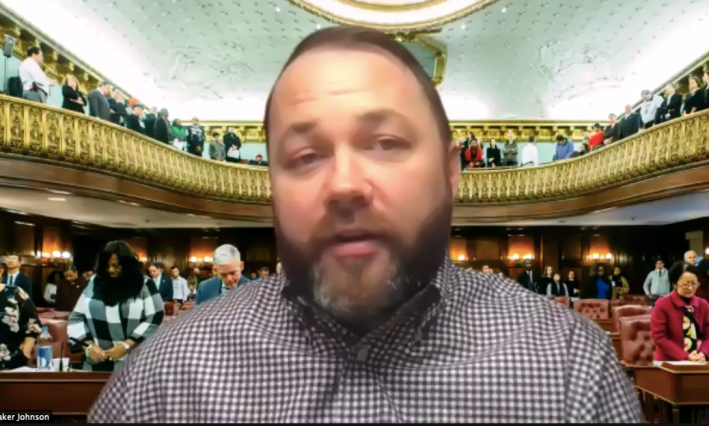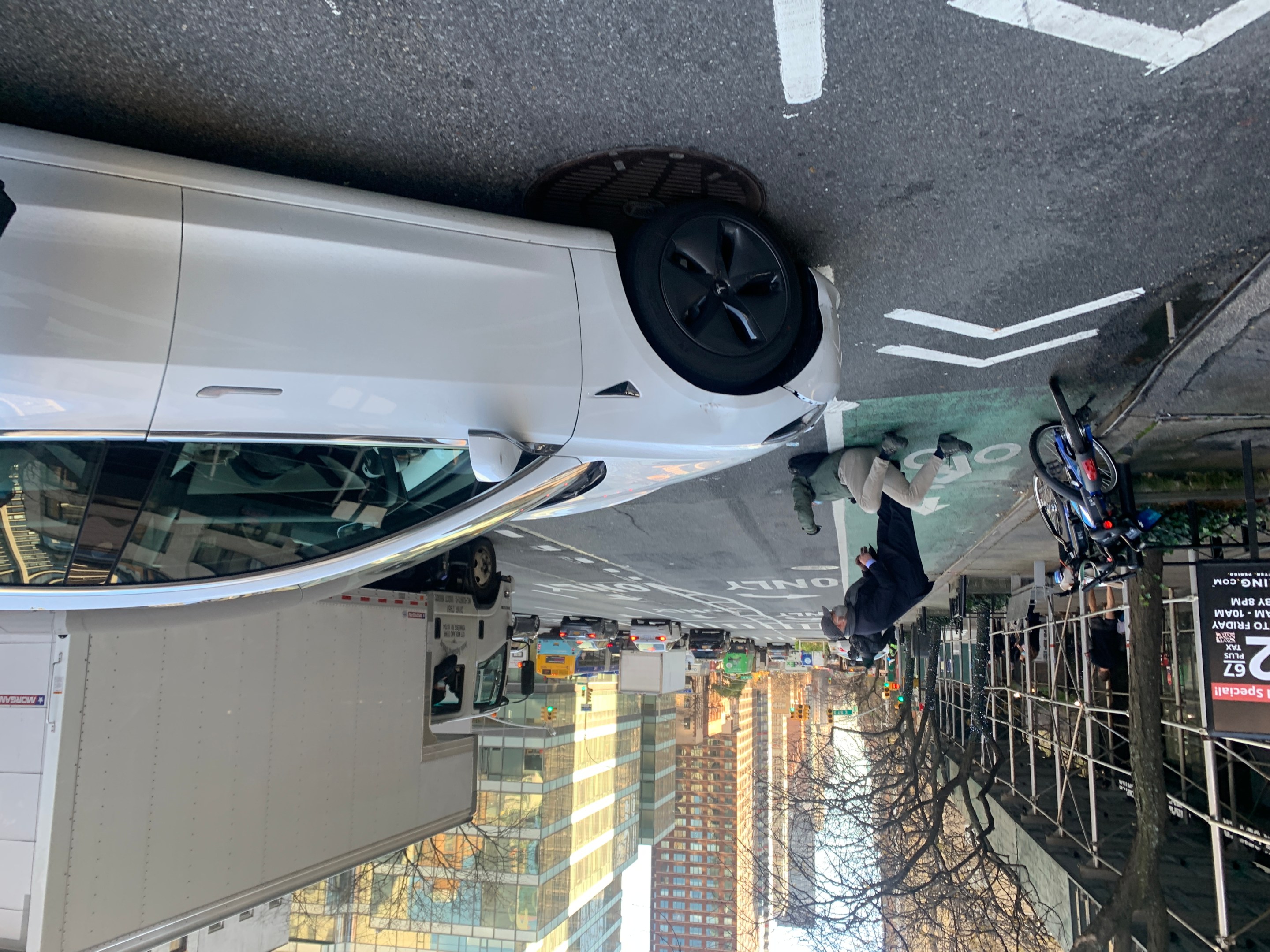The City Council will defy Mayor de Blasio and strip the NYPD of its power to investigate crashes and deliver that crucial street safety role to the Department of Transportation, a move that advocates have long sought, but that the mayor indicated this week he'll fight.
Council Speaker Corey Johnson told Streetsblog on Thursday that he personally supports the bill, Intro 2224, which would "transfer the primary responsibility for investigating serious vehicular crashes from the Police Department to the Department of Transportation."
"It's a great bill," Johnson said on Thursday. "The Collision Investigation Squad could operate in a better way. It could be professionalized by having DOT take the lead. ... [We need to] change the footprint of what we use cops for in New York City, so the Council will move ahead."

That puts Johnson and de Blasio on their latest collision course. On Wednesday, also in response to a question from Streetsblog, the mayor said he opposes the bill (though in a manner that contradicts his administration's previous policies). Here's the mayor's answer:
We need to figure out the best way to investigate crashes for multiple purposes. There's the criminal justice element of this: I want to see stronger penalties for people who hurt or kill other people with their automobile. I still think we have farther to go on that front, particularly in state law. I want to see more stringent investigations that lead to consequences.
I obviously also want to see that crash investigations lead to structural change — design changes or what else is needed. Those are two different elements. Part of that is law enforcement [and] part of that is DOT. I think we have to get everyone working together. We've got a lot of examples of getting agencies to actually be on the same page and work in common. This is an example where we need to do more and better. ... NYPD has been very devoted to Vision Zero. So, my goal is to just do better with crash investigations, but I think NYPD and DOT both have a role to play.
Setting aside the factual inaccuracy of the mayor's belief that the NYPD is "very devoted" to his signature street safety program, the mayor's answer includes basic errors and limited vision. Let's take them in order:
- There is a criminal justice element of NYPD crash investigations, but virtually no drivers who injure pedestrians or cyclists are ever charged, and very few who kill are held accountable. Part of that, experts say, is due to how the Collision Investigation Squad does the investigations themselves. Any charges could be brought by DOT investigators anyway.
- It is unclear if police charges are necessary in the first place. There is a growing body of research and advocacy that is focusing on different approaches the criminal justice system could take to punish drivers without jail — so if criminal charges are the only reason that NYPD needs to be involved in crash investigations, a different approach should also lead to a shift in the role played by police. Indeed, an investigator from any agency could write a "failure to yield" summons based on even a cursory review of the crash scene — but NYPD officers routinely don't do that, as Streetsblog reported.
- The mayor's comment that he wants investigations to lead to structural change is specious on its face. In 2019, the NYPD testified against a Council effort to expand the Collision Investigation Squad so that, at the very least, it could investigate more than 200 to 300 crashes per year (there are roughly 45,000 injury-causing crashes in a typical year in New York City, or something like 124 per day). Also, the NYPD's crash investigations do not provide the DOT with recommendations gleaned from the crash scene regarding how a roadway might be redesigned for safety.
(We reached out to DOT for clarification of some of the mayor's points and will update this story if the agency gets back to us.)
The mayor will likely not prevail in his efforts to block the council action, given Johnson's support for the bill and the growing groundswell of support — especially after the George Floyd protests over the summer — for cutting this particular tentacle in the octopine NYPD's role many elements of city government.
Last year, for example, Community Board 4 in Manhattan (Johnson's community board, by the way) demanded that the Collision Investigation Squad be moved to the DOT. Around the same time, Transportation Alternatives called for the same. More recently, state Attorney General Letitia James joined the call.
TA's support for the council legislation follows its 2020 report that blasted the NYPD for failing to conduct “an engineering assessment of the street conditions that contributed to the crash and changes that could have prevented the crash or limited the severity of injuries.” DOT professionals would be better suited to both assess the crash scene and then inform their DOT colleagues of what they should do to prevent future crashes, the report argued.
And that's where the bill, sponsored by council members Brad Lander, Steve Levin, Ydanis Rodriguez and Johnson, comes in. Beyond merely assigning the task of investigating crashes to DOT, it lays out an entirely new responsibility for the investigators (which may provide some common ground with the mayor).
Specifically, the bill requires investigators to not only analyze the crash site, but also any crashes at "locations with similar street design or infrastructure citywide."
Then, following such a broad review, the unit will be required to "make recommendations, if any, for safety-maximizing changes to street design or infrastructure at the location of such crash or citywide."
In addition, the analysis will have to be posted for public review, something that the NYPD does not do currently. As a result, crash reports, and the key safety details they contain, rarely become public.






